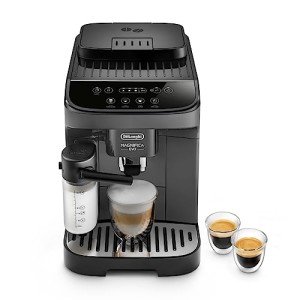11 Strategies To Refresh Your Bean To Cup Espresso Coffee Machine
Bean To Cup Espresso Coffee Machine: The Ultimate Guide
Recently, the coffee culture has actually experienced a substantial improvement, with the rise of home developing devices supplying benefit and quality comparable to café offerings. Amongst these devices, the Bean to Cup Espresso Coffee Machine stands apart as a preferred amongst coffee lovers and casual drinkers alike. This extensive guide explores what these machines are, how they function, the benefits they provide, and aspects to think about when choosing the best one.
What is a Bean to Cup Espresso Coffee Machine?
A Bean to Cup Espresso Coffee Machine is an advanced coffee brewing gadget that grinds coffee beans fresh for each cup, automating the entire espresso-making process. Bean To Cup Coffee Machine include integrated grinders, incorporated milk frothers, and accurate brewing innovation, enabling users to develop premium espressos, lattes, cappuccinos, and more, all from the convenience of their homes. The benefit, matched with the rich and robust flavors produced, has actually made these machines increasingly popular.
How Does It Work?
The fundamental operation of a Bean to Cup Espresso Coffee Machine can be broken down into a number of crucial actions:
Bean Grinding
- The machine grinds whole coffee beans instantly before developing, guaranteeing maximum freshness and taste retention.
Developing
- Ground coffee is packed into a filter, and hot water is forced through the coffee premises at high pressure, which is essential for developing espresso.
Frothing (Optional)
- Many models include a steam wand or milk frother for preparing frothed milk for lattes and coffees.
Serving
- The last phase includes giving the brewed coffee into a cup, frequently with programmable features for personalization.
Benefits of Bean to Cup Espresso Machines
Investing in a Bean to Cup Espresso Coffee Machine offers many advantages, adding to its growing popularity.
Advantage
Description
Convenience
One-touch operation minimizes the time and effort required to prepare coffee.
Quality
Freshly ground beans cause a richer, more flavorful beverage compared to pre-ground options.
Modification
Users can change settings to suit personal preferences, consisting of grind size, coffee strength, and milk froth levels.
Cost-Effective
Although the preliminary financial investment might be high, cost savings on coffee buy from cafés can be considerable in time.
Flexibility
The capability to brew various coffee types, from espresso to cappuccino, broadens the machine's appeal.
Key Features to Look For
When choosing a Bean to Cup Espresso Coffee Machine, various functions can affect the purchase decision. Below are necessary elements to consider:
Grinder Type
- Burr mills are preferred over blade mills for their consistent grind size.
Brewing Pressure
- Try to find machines that offer at least 15 bars of pressure for ideal espresso extraction.
Milk Frother
- Choose between manual steam wands or automatic milk frothers based upon choices for milk texture and foam.
Interface
- An easy to use control board with programmable settings enhances the overall experience.
Size and Design
- Think about the counter top space readily available and pick a design that complements your cooking area aesthetics.
Maintenance Options
- Some machines use automatic cleaning cycles, which can conserve time and effort in upkeep.
Popular Bean to Cup Espresso Machines
Picking a machine that fits one's needs can be tough. Below is a list of popular designs, understood for their dependability and efficiency.
Design
Secret Features
Price Range
De'Longhi Magnifica ESAM3300
Adjustable coffee strength, compact style
₤ 550 – ₤ 700
Breville Barista Touch
Touchscreen controls, integrated cone-shaped burr mill
₤ 800 – ₤ 1,150
Saeco PicoBaristo
Automatic milk frother, 12 coffee specializeds
₤ 900 – ₤ 1,300
Jura E8
Pulse Extraction Process, Alexa Compatible
₤ 1,800 – ₤ 2,500
Gaggia Anima
Easy to clean, programmable settings
₤ 500 – ₤ 800
Upkeep Tips
Keeping a Bean to Cup Espresso Coffee Machine in great condition is necessary for ensuring longevity and ideal performance. Here are some maintenance pointers:
- Regular Cleaning: Clean the machine's parts frequently, consisting of the drip tray, coffee premises container, and water reservoir.
- Descaling: Perform descaling every few months based upon water firmness and usage to avoid mineral accumulation.
- Change Water Filter: If the machine has a water filtering system, alter the filter as suggested.
- Inspect Seals and Gaskets: Check for wear and tear to avoid leakages and guarantee proper pressure during developing.
FAQs
1. Are Bean to Cup Espresso Machines easy to use?Yes, most models are designed for user benefit with simple control board and one-touch operation. 2. Can I use pre-ground coffee in these machines?While some machines enable using pre-ground coffee, the main benefit lies in using whole beans for fresh grinding. 3. How frequently must I clean my Bean to Cup machine?Regular upkeep is key; daily cleaning of detachable parts and descaling every 2-3 months are normally suggested. 4. What is the typical
life expectancy of a Bean to Cup Espresso Coffee Machine?With appropriate maintenance, these machines can last anywhere from 5 to 15 years based on use quality
**. 5. Are these machines worth the investment?Though they can be pricey, the convenience, quality coffee production, and long-term cost savings make them a worthy financial investment for lots of coffee lovers. Purchasing a Bean to Cup
Espresso Coffee Machine can substantially improve the home
coffee experience. By providing newly brewed, high-quality coffee, these machines deal with the growing demand for café-style drinks in the comfort of one's cooking area. With many alternatives on the market, comprehending features and individual choices will aid in selecting the best machine to fit any coffee lover's needs.  **
**